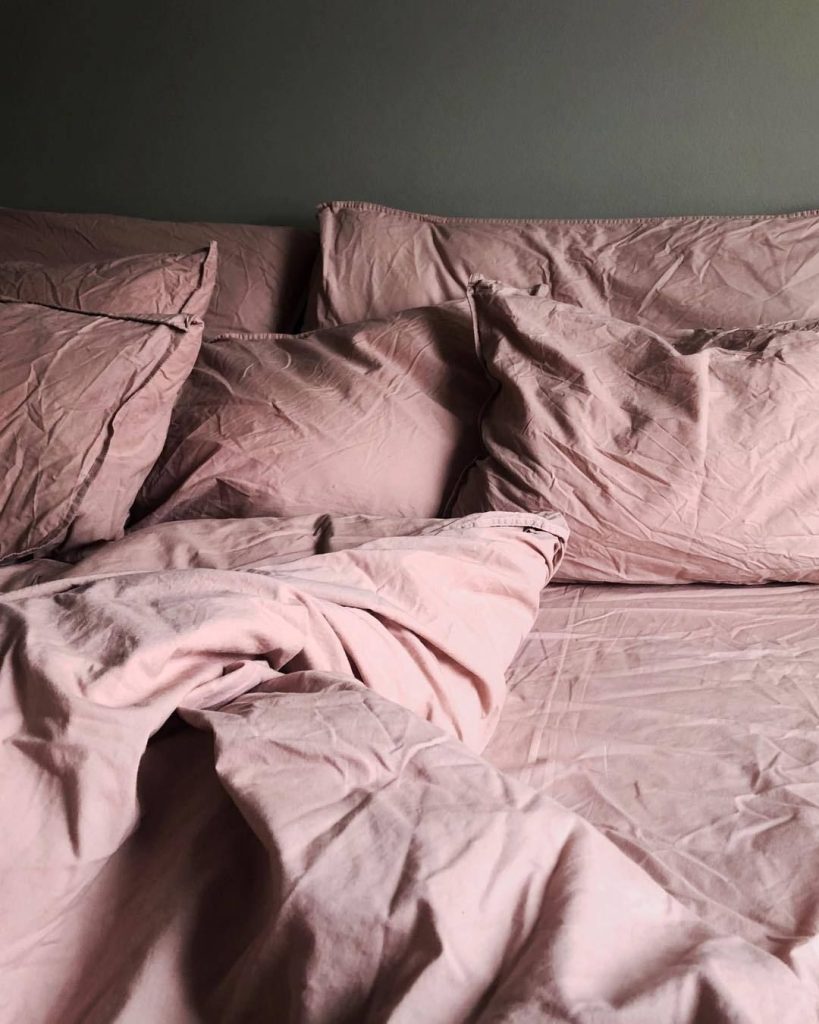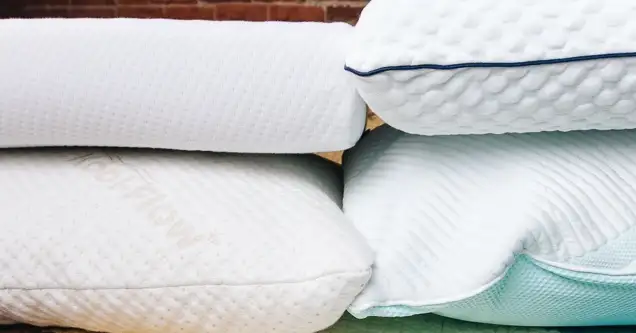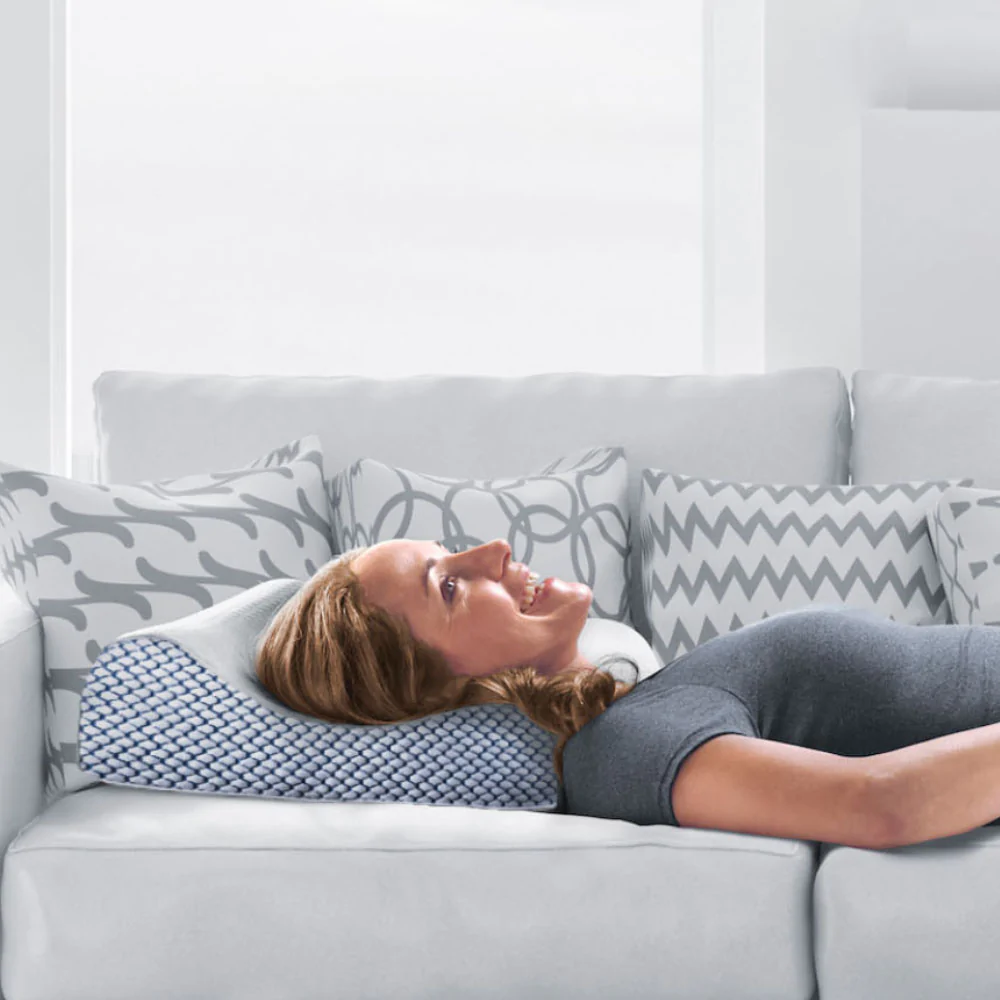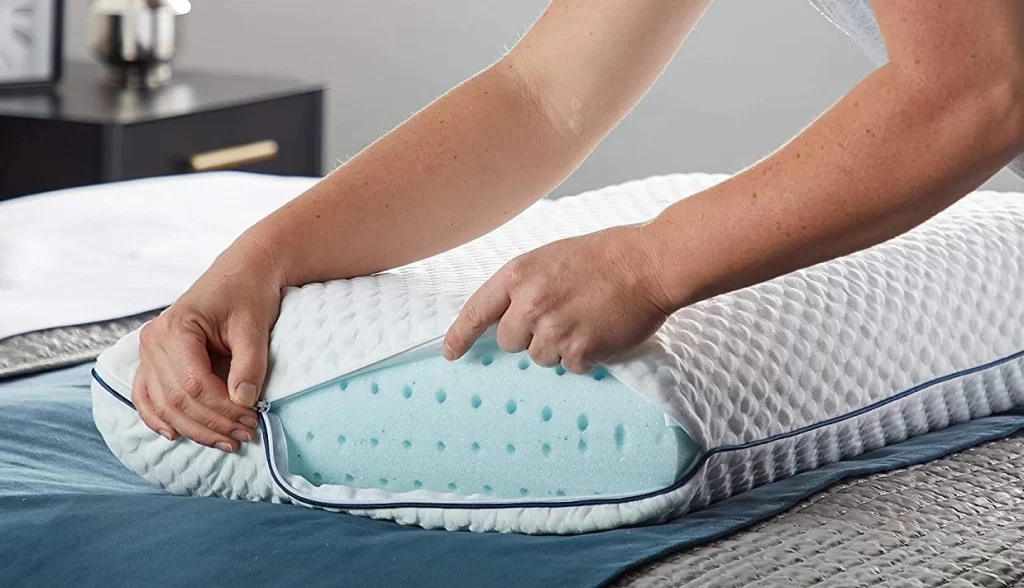Most likely, you wouldn’t don flip-flops and denim shorts to go for a run. According to psychologists and sleep specialists, just as what you wear affects how well you do in sports, bedroom environment and specifically what you sleep on affects 20 to 25 per cent of the quality of your sleep.
If we change our mindset and think of sleep as a performance activity, we wouldn’t mind spending on sleep equipment just as much as we do for exercise. Choosing high-quality bedding, including pillows, can be crucial for the quality of your sleep, as it can enhance many aspects of your life, from your ability to concentrate at work, and your immune system, to your hormonal health.

Why Does Your Pillow Choice Matter?
Pillows are equally as important as a good mattress for your health and sleep quality. However, many people choose generic pillows instead of considering their importance. Modern bed pillow designs, including cervical or body cushions, might lessen chronic pain, improve sleep conditions, and help you feel more at peace while sleeping, even though traditional, rectangular pillows are incredibly supportive.
And the filling impacts a pillow’s cost, conformance, lifespan, and breathability. For a comfortable night’s sleep, the ideal option should reduce pressure, support your head and neck, and encourage a healthy spine. We lay out your options so you can pick a high-quality cushion and get a good night’s sleep despite the overwhelming number of options available.

How Do I Choose the Right Bed Pillow?
The process of choosing a pillow is rather personal. There is no one-size-fits-all cushion form, size, or material. When browsing through the range of bedding pillows opt for an option that provides support and comfort, just like your mattress should. The best pillow for you should feel cosy to rest your head on, support your head, neck, and shoulders, and complement your bed. So, let’s do some pillow talk and list the most important considerations to your unique criteria while selecting one.

Fill/Fibre
Pillows come in a wide variety of fill options. Depending on your needs and preferences, each has advantages and disadvantages. Let’s examine the most typical types:
Down
Duck and goose underbellies contain the sumptuous and incredibly soft substance known as down. The material may be hypoallergenic, yet it’s not if you are allergic to ducks or geese. Although down pillows require regular fluffing, they are highly sturdy and pliable.
Particularly on chilly nights, down makes a warm and comfortable pillow fill. Despite the fact many people love down pillows, they aren’t that supportive as memory foam or latex. For grander support, companies combine down and ordinary feathers, but these options are less cosy and fluffy.
Down Alternative
Microfiber, sometimes known as a down replacement, is a hypoallergenic material produced from synthetic fibres like polyester or polyfill if you have a down allergy. Although it isn’t as warm, fluffy, or long-lasting as down, it’s affordable, simple to care for, and adaptable.
Memory Foam
Memory foam bedding pillows come in two styles: shredded and block. Shredded memory foam is when polyurethane is torn into tiny bits to create memory foam and occasionally combined with polyfill. Although you may mould and shape shredded foam pillows to fit any sleeping position, they require regular fluffing.
Block memory foam is a solid, rigid polyurethane object. It’s supportive and doesn’t clump as other filling materials do. The memory foam softens and conforms to your head’s, neck’s, and shoulders’ curves in response to your weight and body heat. Additionally, it equally distributes weight throughout its surface.
These features make it a popular option for those who experience head and neck pain or pressure spots that are uncomfortable when trying to sleep. High-quality memory foam bed cushions often contain a built-in ventilation system, which helps avoid the usual heat retention that comes with this material.
Latex
Soft, breathable, and supporting filling options include latex foam. For a clean sleeping environment, it offers good pressure point relief and is resistant to mould, mildew, and dust mites. Latex is also available in shredded and block forms, but memory foam may be a better alternative for you if you’re allergic to latex.
The 100% natural latex is environmentally friendly, biodegradable, and more resilient and pleasant than blended or synthetic latex, so make sure you buy bedding pillows created from it.
Size
While a standard-size pillow is suitable for most people, it’s acceptable to use a bigger one if you can maintain an upright position. The option you choose should be comfortable and have the right thickness or thinness to align your head, neck, and shoulders with your spine as you sleep. Make sure the case and cover are the correct sizes. Avoid cramming an oversized cushion into a small cover or letting a standard-size one float inside an extra-large pillowcase.

Shape
Specialty-shaped pillows are also available to give your head and neck more stability and support. Cervical and contour shapes may aid neck and back pain, while body shapes with contours can offer comfort, support, and alleviation for pressure points all over the body.

Your Sleeping Position
Whether you prefer to sleep on your back, stomach, side, or a combination of all three will affect the pillow you choose. The right pillow will help provide the proper alignment for your spine for optimum sleep. Here are some general principles:
- Those who prefer to sleep on their sides might benefit from a thicker pillow. Find one as thick as the space between your outside shoulder and ear.
- For head support, stomach sleepers may need a softer pillow. You can avoid back pain by placing a pillow under your pelvis and stomach.
- A flatter pillow may be necessary to maintain proper head and neck posture for back sleepers. While you might prefer a softer pillow, if you suffer from neck pain and sleep on your back, search for a pillow that offers more support while being smooth enough to be comfortable.












